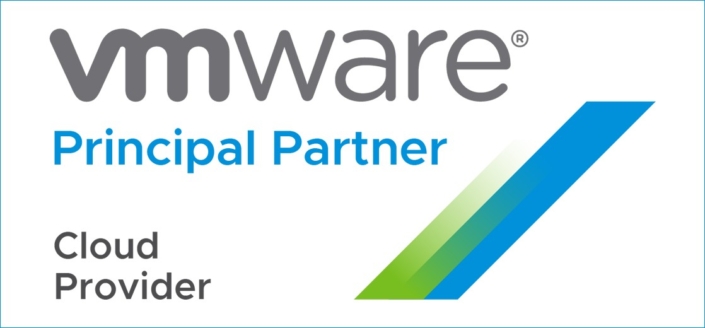5 Questions About VMware’s Stake in the Native Public Cloud

Native public clouds are critical to the digital future of organizations worldwide. Known for bringing consistent infrastructure and operations to private and hybrid clouds, VMware has emerged as an indispensable partner to IT organizations on the journey to the native public cloud.
Moreover, Milin Desai, general manager of VMware Cloud Services, wants to make it very clear to everyone: VMware is not only serious about supporting customers who are adopting native public clouds, but also delivering real value for customers running applications in native cloud environments. Recent announcements—including the introduction of VMware Kubernetes Engine (VKE) and the addition of 35 new integrations to Wavefront—demonstrate the company’s commitment to bringing continuous innovations and new value not only to clouds based on VMware Cloud infrastructure but also to public cloud environments.
Below, find out more about the native public cloud strategy of an IT industry pioneer.
Q&A: Milin Desai with the Latest on VMware Cloud Services
- How does public cloud adoption factor into VMware’s vision and strategy?
At VMware, we enable choice. When we pioneered server virtualization, we provided data center operators a choice over hardware by abstracting physical compute and memory from their existing, underlying infrastructure. In the past decade, we extended that principle to networks, storage, operations and management, meeting the customer on their terms.
Now, as IT transitions to public and managed clouds as a destination for their applications, we enable customers to choose whichever cloud environment best meets their business needs. We do that by offering a valuable set of cloud services for whichever path IT chooses: extending existing VMware workloads to a hybrid cloud, natively operating VMware workloads in a public cloud or managing and securing VMware workloads in a multi-cloud environment.
- How is VMware helping customers as they adopt native public clouds?
Public cloud adoption changes the dynamics of our customers’ organizations. It is critical that we understand the primary use cases and concerns emerging as a result of the adoption and usage of public clouds, including these three distinct decision-makers:
- Central ITis increasingly tasked to extend beyond the data center to leverage and benefit from public clouds. Many organizations mandate a “cloud-first” initiative. Today we enable this team to start getting the business and agility benefits of the cloud without having to re-tune or rethink everything. We do this by delivering the VMware software-defined experience (as a service) with global partners like IBM, Rackspace and OVH, as well as with offerings such as VMware Cloud on AWS in partnership with Amazon. Customers leverage this capability to accelerate their go-live disaster recovery plans from months to weeks, to migrate and evacuate regional data centers in days as opposed to months and to optimize and reduce spending without additional retooling and retraining. Additionally, with these innovations central IT gains the luxury of infinitely scalable and globally available capacity consumed as an operating expense, with consistent management, security and
- App development teamsuse open frameworks (g., Jenkins, Prometheus, K8s, Terraform, etc.) and choose public cloud services that enable them to build the most innovative applications. VMware is starting to engage with this audience via offers around K8s (both as a product with Pivotal Container Service or as a fully managed service with VKE), and a cloud-scale metrics collection platform (Wavefront by VMware) without compromising developers’ choice of frameworks or clouds. Increasingly we also talk to them about delivering compliance as code thereby enabling them to adhere to corporate standards as part of the CI/CD pipeline.
- Cloud operationsis an emerging function in IT that ensures business controls are maintained without imposing a central gate on public cloud adoption. The tools that this organization uses can be categorized as “just-in-time” to enable compliance, cost and ongoing cloud operations. At VMware, we offer services that deliver core capabilities to this audience so they can help manage a multi-cloud environment that provides infrastructure and services in a frictionless fashion.
Our services provide capabilities that appeal to these very unique users. This helps reduce tool sprawl, which has attendant issues of price, complexity and integrability. As an example, Wavefront can be used by developers to instrument and monitor their applications, as well as by cloud operators to monitor their cloud infrastructure (e.g., instances, storage, Database as a Service, serverless and more).
- What is VMware’s approach to building services for the public cloud?
All of our cloud services, whether built from the ground up or acquired, are architected and engineered to serve a multi-cloud reality. VMware focuses on leveraging the latest cloud-native, “born in the cloud,” approaches to building our SaaS offerings. This, in turn, builds deep empathy and understanding of what real application developers and public cloud operators contend with regularly.
We build on our core value proposition of managing and operating private clouds while embracing newer approaches both organically and inorganically. For example, we extended the VMware SDDC to the public clouds through our partnerships, including Amazon Web Services (AWS) and IBM Cloud. Additionally, our expanding portfolio of services helps solve multi-cloud problems. The recently launched VMware Kubernetes Engine is a new service that delivers dial-tone Kubernetes (K8s) in the native public cloud. On the other hand, we acquired CloudCoreo, a security and compliance solution, to provide robust coverage whether the workload is in the data center or the public cloud.
- How does VMware make the numerous cloud services available into a fast, frictionless experience for IT?
By understanding these different decision-makers and their needs, we enable IT teams to win and collaborate. Delivering a delightful experience is vital to succeed in this new world. That starts with simple things like bring-your-own enterprise identity, self-service demos, integrated learning and help modules and more. The goal is to enable IT to get to their outcomes with the least amount of friction.
Multi-cloud computing could create blind spots and give rise to new operational silos within an organization. To help overcome these issues, our software-as-a-service cloud services help customers visualize, manage, secure and operate their multi-cloud environments with the same consistency they have come to expect from their VMware software-defined data center (SDDC) stack.
- What’s next for VMware Cloud Services?
We are focused on delivering faster time to value while providing a more simplified experience, whether the application is private, hosted or public. With this fundamental principle, we are focused on two essential elements going forward with cloud services:
- Deliver a set of solutions that help manage, secure and operate applications running on VMware-based clouds and public clouds.
- Deliver capabilities to refactor existing applications or build new applications with their choice of destination and ecosystem all while working with community-based frameworks.
Sources: VMware/Radius
Need cloud computing? Do not hesitate to contact us at sales@zettagrid.id or call to +62 811 28 38 78














